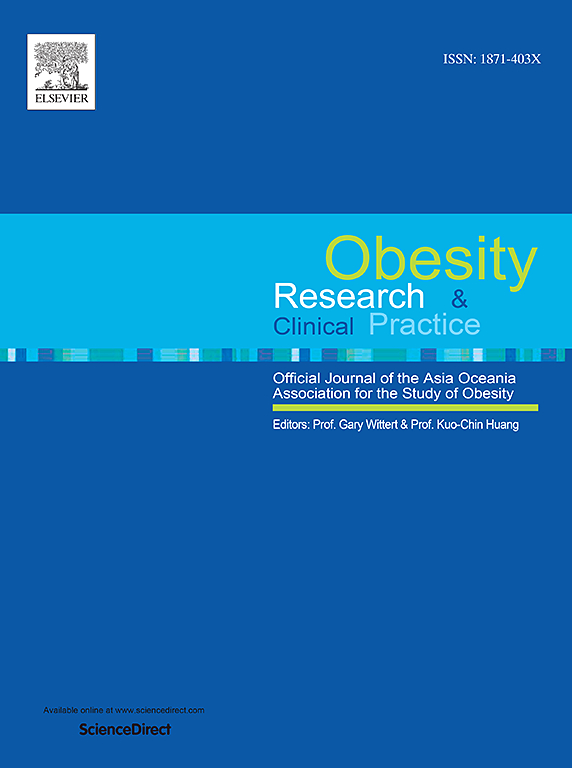Persian Gulf brown seaweed extracts showing anti-obesity potency on adipogenic differentiation in human adipose-derived mesenchymal stem cells and obese male rats
IF 2.5
4区 医学
Q3 ENDOCRINOLOGY & METABOLISM
引用次数: 0
Abstract
The objectives of this study were to compare the effects of two Persian Gulf marine algae, Padina pavonica (Pp) and Sargassum angustifolium (Sa), on both in vitro and in vivo models.
Hot water and Ethanolic extracts of Pp (HWE.Pp, EE.Pp) and Sa (HWE.Sa, EE.Sa) were added to human adipose-derived mesenchymal stem cells (hADMSCs) cultures treated with adipogenic medium. An in vivo study was done by feeding the extracts to the high-fat diet (HFD) male Wistar rats.
A decrease in adipocyte differentiation, and an increase in leptin production and energy loss as indicated by UCP1 and UCP3 upregulation and intracellular glucose content were detected. Weight loss, food intake reduction, downregulation of the PPARγ, and upregulation of UCP1, UCP3, FNDC5, and leptin were observed in the animals were fed with both algae compared to untreated obese and normal rats. Both extracts with superiority of Sa also normalized the level of blood sugar, cholesterol, triglyceride, low-density lipoprotein (LDL), high-density lipoprotein (HDL), as well as inflammatory factors and liver enzymes. HW-Sa was the best extract to normalize all the criteria.
Sa can be considered as a good remedy for losing weight by inhibiting adipocyte differentiation, and inflammation, increasing energy loss, and decreasing food intake through leptin elevation.
波斯湾褐藻提取物对人脂肪来源的间充质干细胞和肥胖雄性大鼠的成脂分化具有抗肥胖作用
本研究的目的是比较两种波斯湾海藻Padina pavonica (Pp)和Sargassum angustifolium (Sa)对体外和体内模型的影响。Pp (HWE)热水和乙醇提取物。Pp, EE.Pp)和Sa (HWE. Pp)Sa, ee, Sa)加入到用脂肪培养基处理的人脂肪源性间充质干细胞(hADMSCs)培养中。通过给高脂饮食(HFD)雄性Wistar大鼠喂食提取物进行了体内研究。通过UCP1和UCP3的上调和细胞内葡萄糖含量检测到脂肪细胞分化减少,瘦素产生和能量损失增加。与未治疗的肥胖大鼠和正常大鼠相比,喂食这两种藻类的动物体重减轻,食物摄入量减少,PPARγ下调,UCP1, UCP3, FNDC5和瘦素上调。具有Sa优势的两种提取物还能使血糖、胆固醇、甘油三酯、低密度脂蛋白(LDL)、高密度脂蛋白(HDL)以及炎症因子和肝酶水平正常化。HW-Sa是所有标准归一化的最佳提取物。Sa可以被认为是一种很好的减肥药物,通过抑制脂肪细胞分化和炎症,增加能量损失,通过提高瘦素来减少食物摄入。
本文章由计算机程序翻译,如有差异,请以英文原文为准。
求助全文
约1分钟内获得全文
求助全文
来源期刊

Obesity research & clinical practice
医学-内分泌学与代谢
CiteScore
7.10
自引率
0.00%
发文量
80
审稿时长
49 days
期刊介绍:
The aim of Obesity Research & Clinical Practice (ORCP) is to publish high quality clinical and basic research relating to the epidemiology, mechanism, complications and treatment of obesity and the complication of obesity. Studies relating to the Asia Oceania region are particularly welcome, given the increasing burden of obesity in Asia Pacific, compounded by specific regional population-based and genetic issues, and the devastating personal and economic consequences. The journal aims to expose health care practitioners, clinical researchers, basic scientists, epidemiologists, and public health officials in the region to all areas of obesity research and practice. In addition to original research the ORCP publishes reviews, patient reports, short communications, and letters to the editor (including comments on published papers). The proceedings and abstracts of the Annual Meeting of the Asia Oceania Association for the Study of Obesity is published as a supplement each year.
 求助内容:
求助内容: 应助结果提醒方式:
应助结果提醒方式:


